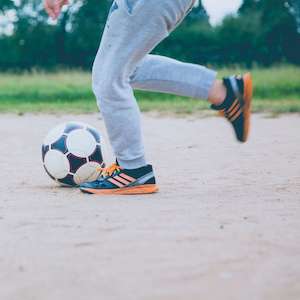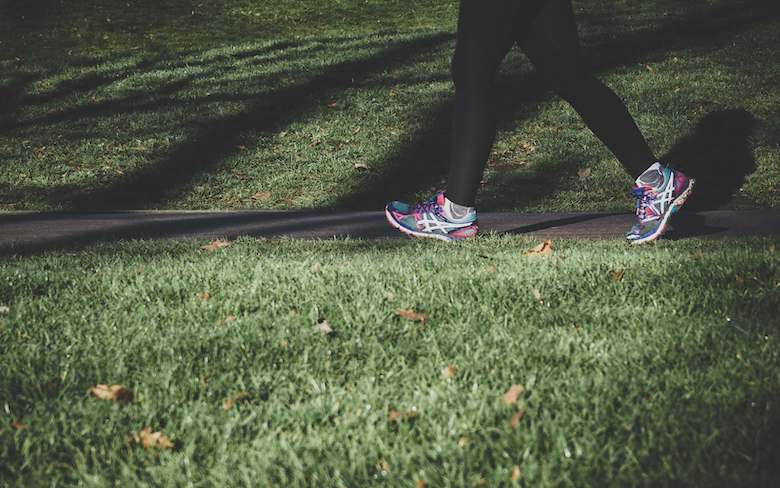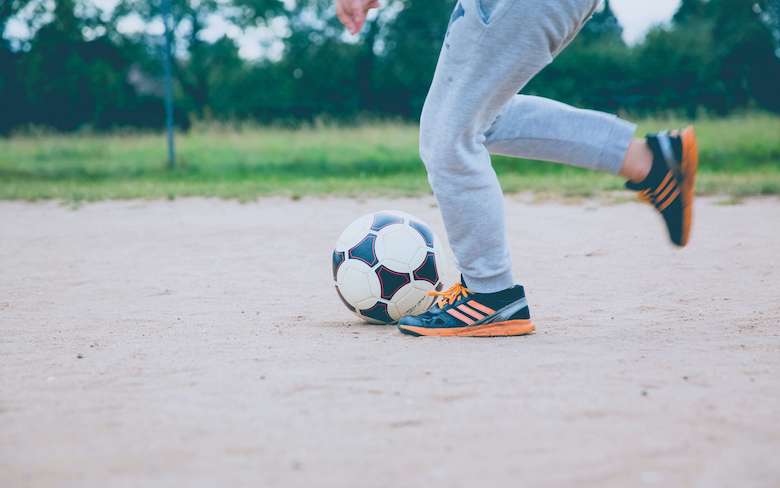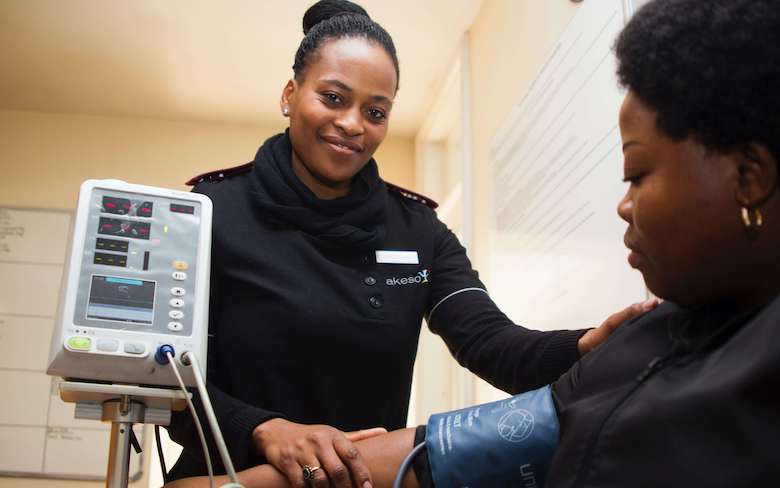
Why Is Physical Activity Important – Doing it alone won’t work!
While we all know how important physical activity can be, we generally live a sedentary lifestyle compared to our ancestors.
Thanks to modern conveniences – ranging from online shopping instead of heading to the supermarket in person, or reading books on our phones instead of heading to the library – there’s not much reason for us to get up and get active in our daily lives!
While exercising at the gym or via a Zoom a couple of times a week is a fantastic way to get that physical activity in, it’s still important to incorporate physical activity into your everyday routine.
Read on to find out exactly why physical activity is so important, and how you can start adding physical activity to your to-do list, regardless of your age and ability!

Why is daily physical activity important?
There are many different ways in which physical activity and exercise can improve your health. When you have a clearer idea of why you need physical activity for health and wellbeing, it’ll help motivate you even when all you wanna do is sit on the couch all day!
Always remember that it takes 6 weeks or more for a habit to kick in. Even personal trainers and fitness experts often rely on another coach to get them motivated and accountable when it comes to achieving their health and fitness goals.
1. Physical activity helps prevent health issues
Regular physical activity can reduce the risk of developing diseases like Type 2 diabetes, cancer, and cardiovascular disease.
2. Physical activity improves long-term health
You’ll be able to better manage your weight, cholesterol level, and joint health if you prioritise daily physical activity. This may not seem like a big deal when you’re young and healthy, but when you’re approaching older age, you’ll be grateful to your past self for investing in your long-term health!
3. Physical activity improves your quality of life
Some of the benefits of regular exercise include better sleep, having more energy, and improving posture. For the elderly, improvements to quality of life include being at a lower risk for falls, and recovering better from periods of hospitalisation or bed rest.
4. Physical activity helps your mental health
Regular physical activity has been shown to help with hormonal imbalances that can cause depression. More than that, exercise improves your mood in the short term thanks to the endorphin rush, and over time this can really affect your mental health. Increased energy levels and socialisation also helps to improve your mental state.

Why is daily physical activity important for youth
Children and teenagers can benefit from physical activity in many ways. It primarily aids in improving their health, helping strengthen their bones, muscles, and even organs like their hearts and lungs. Their posture, balance, coordination, and flexibility can also benefit from regular physical activity.
For children in particular, one of the perks of regular physical activity is to help them develop and maintain healthy habits in the long run. This is great for the physical and mental health, helping to boost their self-esteem and confidence along the way!
Group exercise and team sports are also good for children’s social skills, and are fantastic ways to develop their communication and problem-solving skills.
The best part about children and teenagers is that they’re naturally active! But it still makes sense to have a few physical activity ideas for your kids on hand.
Why is daily physical activity important for adults
Lifelong physical activity has been shown to improve not just short-term health, but the benefits have been known to last well into old age too. So even if you don’t feel that it’s important to start exercising regularly now, do your future self a favour by starting today!
Diseases like Type 2 diabetes and cardiovascular problems – including high blood pressure and heart disease – are chronic health issues that you’ll have to deal with for the rest of your life. You need to do everything you can to prevent these issues from cropping up in the first place if you want the best quality of life as you age. Physical activity is an important aspect of that!
Other than that, maintaining joint health, flexibility, and coordination will help you stay independent and healthy for years to come, and afford you the freedom to continue doing all the things you enjoy, with no limits from your physical health to stop you.
How much exercise do you need in a day?
Most health professionals and researchers have come to the conclusion that everyone should do a minimum of 30 minutes of moderate physical activity daily. We always remind clients that it’s much better to exercise for short amounts of time every day instead of going really hard for 3 hours just once a week!
Consistency is key when it comes to physical activity, so carve out at least half an hour each day to commit to physical activity.

Ideas for physical activity
Moderate physical activity looks different for each person, depending on their age and abilities. Exercise is one of those things that you can do just about anywhere – you can be active in your own home, at a gym, at school or work, or in a community group.
You may not notice, but it’s likely that you’re already doing physical activities as part of your travel, leisure time, and family time. Think about all the walking you do on your morning commute, long weekend hikes, and playing cops and robbers with your children. That’s all physical activity!
Then there’s incidental exercise – these are usually small movements that you make throughout the day that wouldn’t really count towards your daily half hour moderate physical activity quota, but still keep you active instead of sedentary. Some examples of this include taking the stairs instead of the lift, walking or cycling to nearby locations instead of driving, and parking further away from the shopping centre entrance.
Need more ideas for physical activities? Here are a few to get you started!
1. Physical activity for beginners
We always encourage people to ease into their exercise routines if they’re new to it. We also recommend engaging a personal trainer to create a proper plan that is based around their abilities. Remember, it’s way more important to start small and stay consistent instead of going hard and injuring yourself, and then needing to take a break to recover! Here are some easy exercise ideas:
- Take a brisk walk for 20-30 minutes. It should be vigorous enough to get your heart rate elevated.
- Practice basic strength exercises. Squats, crunches, and push-ups are basic exercises that don’t need equipment. Just make sure you have a professional to help you get correct form!
- Try some stretching or yoga. While stretching doesn’t appear that rigorous, half an hour of even the most basic yoga stretches can be surprisingly exhausting! YouTube has plenty of videos for basic stretches to get you started, like the 30-day morning yoga challenge by Yoga by Kassandra.
2. Physical activity for active people
If you’re already active, you’re already onto something! But sometimes even the most active people aren’t focused on getting that consistent routine going, so that’s going to be your biggest challenge here. So here are some ideas for physical activity that can help you push that little bit harder!
- Increase reps, not weight. While this isn’t usually the recommendation for gaining muscle mass, it’s a great way to improve your cardiovascular health.
- Focus on different muscle groups. We all know that joke about the people who skip leg day, so don’t fall victim to that! Make sure your exercise routine allows you to work out every single muscle group so nothing gets neglected.
- Try something new. You may be great at weight-lifting, but when was the last time you spent an hour doing aerobic exercise? Trying something new isn’t just fun, but it’s a good way to challenge your body as well.
3. Physical activity for elderly
Yes, even the elderly can benefit from physical activity! If you’re looking to get active after a lifetime of being sedentary, you’ll definitely need your professional health team – this includes your GP, nutritionist, and personal trainer – to create a plan for you. The key thing is to take it easy, but be consistent:
- Prevent injury. Simple things like stretching and good form is key to preventing injury, so make sure your team prioritises this.
- Walk! This is one of the best ways to get started on your fitness journey in old age, as it’s kind to your joints but still elevates your heart rate.
- Group activities. Combining socialisation and physical activity is a good way to keep you accountable and have fun at the same time! Challenge your friends to some ping pong or join a water aerobics class together.
4. Physical activity for the disabled
As with the elderly, it’s important that your health team comes together to create an exercise plan that is appropriate for you. The good news is, most exercises can be adapted for your abilities, and in some cases, can directly reduce the impact that your disability may have on your quality of life! Here are some ideas to help you become more physically active:
- Find exercises that are equipment-friendly. There are so many ways to be physically active, and it doesn’t have to exclude any equipment you need to assist you.
- Move a little bit more each day. If you’re just getting started, remember that it’s the effort that counts, not the results! So start with a few minutes of physical activity, and continue building upon that every day.
- Group activities. You’d be surprised how many sports out there also include para-athletic teams! So if you have a favourite sport – whether its track, footie, or tennis – start searching for a training program near you.
What to do before starting a new physical activity
Depending on your health risks, you may need a health professionals approval before starting any new physical activity. Make sure you see your GP or health team for an assessment before taking part in a new physical activity regimen if you fulfil any of the criteria below:
- You have chronic health issues that can be exacerbated by physical activity like heart disease, asthma, or diabetes
- You are at risk of heart disease
- You are pregnant or suspect you may be pregnant
- You have a history of dizzy spells or fainting
- Physical activity causes pain in your chest and difficulty breathing
Ready to commit to achieving your health and fitness goals?
As you can see, being physically active is important for everyone. There are benefits for every age group and ability level. More importantly, there are a range of physical activities out there for you to choose from.
Do you need a health and fitness plan to help you get active? Don’t do it alone! We offer personal training and nutrition advice as part of our services, so be sure to get in touch with us to get started.





Leave a Comment